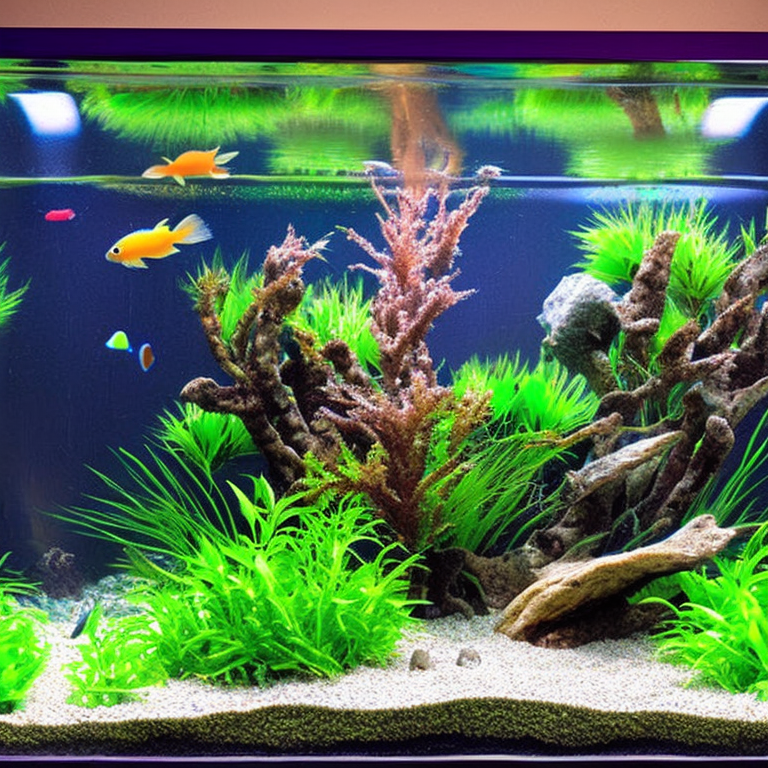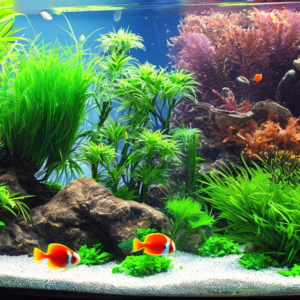Your Comprehensive Guide to Starting a Tropical Fish Aquarium
Embarking on the journey of keeping tropical fish is an incredibly rewarding and entertaining hobby. Whether you are stepping into this vibrant world for the first time or you have some experience under your belt, there are crucial aspects to consider for setting up and maintaining a thriving aquarium. Proper care and understanding of fish needs can enhance both the aesthetic of your aquarium and the well-being of your aquatic pets.
The first step in this exciting adventure is selecting the right size aquarium tailored to the type and quantity of fish you wish to keep. It’s imperative to research the specific requirements and characteristics of each fish species before making any purchases. Understanding their space needs helps prevent overcrowding, which can lead to increased water pollution and stress among your fish, ultimately jeopardizing their health and happiness.
Regular water testing and maintenance are vital for sustaining a healthy aquarium. This includes routine water changes to maintain stability and quality. Additionally, properly cycling your aquarium before introducing fish is essential. This process allows beneficial bacteria to establish, which are crucial for breaking down waste and preventing harmful spikes in ammonia and nitrite, ensuring a safe environment for your aquatic companions.
With the right knowledge, equipment, and care, keeping tropical fish can transform into a fulfilling and captivating hobby that brings joy and tranquility to your home.
Key Elements for Successful Tropical Fishkeeping
Selecting the Ideal Aquarium Size and Type
Choosing the perfect aquarium is a fundamental aspect of successful tropical fishkeeping. A well-known guideline is to opt for a tank that holds at least 20 gallons of water, as this size provides ample swimming space for your fish and allows for better water quality management. A larger tank can accommodate a wider variety of species and offers a more stable environment for your aquatic life.
When it comes to material, glass aquariums are a popular choice due to their durability and resistance to scratches. On the other hand, acrylic tanks are lighter and more shatter-resistant, although they may scratch more easily. Each type has its benefits, so consider your specific needs and preferences when selecting the best aquarium for your tropical fish.
Ensuring Optimal Water Quality and Parameters
Maintaining ideal water quality is crucial for the health of your tropical fish. Regular testing for pH, ammonia, nitrite, and nitrate levels is vital. Aim to keep ammonia and nitrite levels at zero, while maintaining pH levels between 6.5 and 7.5. Additionally, keeping nitrate levels below 40 parts per million is essential for a healthy aquatic environment.
As a general guideline, performing weekly water changes of 10-20% can help maintain these parameters effectively, ensuring that your fish live in a clean and stable environment.
Temperature Regulation and Effective Filtration Solutions
Tropical fish thrive in a consistent temperature range of 75-82°F (24-28°C). Therefore, investing in a reliable heater is essential to maintain this temperature. Alongside heating, an efficient filtration system plays a crucial role in keeping the water clean and free from harmful waste. A good filtration system removes excess waste and helps maintain water clarity.
Various filtration options are available, including power filters, canister filters, and sponge filters. Power filters are widely used for their ease of maintenance. Canister filters are suited for larger aquariums due to their powerful capabilities, while sponge filters are ideal for smaller setups or for those who prefer a low-maintenance option.
How to Select the Right Tropical Fish for Your Aquarium
Selecting the right tropical fish for your aquarium involves considering several factors to ensure a harmonious environment. By taking into account compatibility, growth potential, and dietary needs, you can create a thriving aquatic community that flourishes in its setup.
Understanding Species Compatibility for a Peaceful Aquarium
When choosing fish for your aquarium, it’s vital to ensure that the species you select can coexist peacefully. Some fish are known for their territorial or aggressive behavior, while others are more peaceful and thrive in schools. Thoroughly researching the temperament and social needs of the fish you are interested in will help you avoid conflict and create a harmonious tank environment.
Considering Fish Size and Growth Expectations
It’s important to take into account both the size of your aquarium and the expected adult size of the fish you plan to keep. Certain species may grow significantly larger than their juvenile size, necessitating a larger tank to accommodate their growth. Planning ahead helps prevent overcrowding, which can lead to stress and health issues among your fish.
Meeting Dietary Needs for Optimal Fish Health
Understanding the dietary requirements of your tropical fish is essential for their health and vitality. Different species have varying dietary preferences; some are herbivores, while others are carnivores or omnivores. Conducting research on the nutritional needs of your chosen species will ensure that you provide the right type of food, promoting their overall well-being and longevity.
By considering factors such as species compatibility, fish size expectations, and dietary requirements, you can make informed choices when selecting tropical fish, ensuring a thriving, joyful aquatic community in your aquarium.
Essential Practices for Aquarium Setup and Maintenance
Mastering the Cycling Process for a Healthy Aquarium
Cycling your aquarium is a crucial process that establishes beneficial bacteria within the filter media to effectively break down harmful ammonia and nitrite produced by fish waste. This essential process can take several weeks, so it’s important to exercise patience and refrain from adding fish until the cycling is fully complete.
To initiate the cycling process, you can introduce ammonia into the water using fish food or pure ammonia. Regularly test the water for ammonia and nitrite levels with a reliable test kit. As ammonia levels decrease and nitrite levels rise, you’ll know the cycle is progressing well. Continue adding ammonia until both ammonia and nitrite levels drop to zero. Once this occurs, your aquarium is ready for fish introduction.
Establishing a Consistent Cleaning Routine
Regular cleaning and maintenance are vital for keeping your aquarium in excellent condition. A weekly water change of 10-20% is recommended to eliminate excess waste and replenish essential minerals and nutrients. Additionally, using a gravel vacuum helps remove debris from the substrate, and routinely cleaning the filter medium ensures optimal filtration performance.
It’s also crucial to monitor water parameters such as temperature and pH regularly using a test kit. Any significant fluctuations in these parameters can negatively impact your fish, so addressing any issues promptly is essential for maintaining a stable and healthy aquarium environment.
Creating an Inviting Aquascape and Decoration
Aquascaping and decorating your aquarium are essential components that contribute to the overall health and happiness of your tropical fish. Incorporating a variety of hiding spots and exploration areas, such as caves, plants, and driftwood, enriches your fish’s environment. However, it’s important to avoid overcrowding the tank, ensuring that your fish have ample open swimming space.
Live plants not only enhance the aesthetics of your aquarium but also provide benefits such as natural filtration and oxygenation. When selecting plants, ensure they are compatible with your aquarium’s lighting and conditions. Avoid using potentially harmful decorations, such as sharp or rough objects that might injure your fish.
By following these straightforward guidelines, you can create a lively and healthy habitat for your tropical fish that promotes their well-being and enhances your aquarium’s beauty.
Ensuring the Health and Well-being of Your Tropical Fish
Identifying Common Tropical Fish Diseases and Treatments
Tropical fish are susceptible to various diseases, some of which can be fatal if not addressed promptly. Common ailments include fin rot, ich, and dropsy. Infected fish may display symptoms such as white patches on their bodies, deteriorating fins, or swelling due to fluid accumulation.
If you notice any signs of illness, it’s crucial to isolate the affected fish immediately and administer appropriate medication. Maintaining optimal water quality and avoiding overfeeding are essential preventive measures, as fish are more vulnerable to illness in subpar water conditions.
Strategies for Stress Prevention in Tropical Fish
Stress is a significant factor that can adversely affect your fish’s health. Common stressors include overcrowding, aggressive tankmates, and sudden fluctuations in water temperature or chemistry. To minimize stress, ensure your fish have adequate space to swim and hide, and choose species that are similar in size and temperament.
When introducing new fish to your aquarium, it’s essential to acclimate them gradually to the existing water conditions. This helps reduce shock and ensures a smoother transition for your new aquatic friends.
Implementing Effective Quarantine Procedures for New Fish
Establishing quarantine procedures is crucial for monitoring the health of new fish before introducing them to your main aquarium. Keeping new arrivals in a separate quarantine tank that mimics your primary aquarium’s conditions allows you to observe them for any signs of illness.
If necessary, treat any symptoms with appropriate medication during this period. By adhering to these guidelines, you can promote the health and well-being of your tropical fish, helping them thrive in a safe and nurturing environment.
Exploring Advanced Fishkeeping Techniques
The Art and Science of Breeding Tropical Fish
Breeding tropical fish can be a highly rewarding endeavor for seasoned aquarists, but it requires extensive knowledge and careful preparation. Before attempting to breed your fish, it’s essential to research the specific breeding requirements of the species you are interested in. Certain species have unique needs regarding water conditions, lighting, and diet to achieve successful breeding.
Setting up a dedicated breeding tank separate from your main aquarium is crucial. This breeding tank should include appropriate filtration, heating, and possibly specific plants or decorations that provide hiding places and breeding sites for your fish.
Incorporating Live Plants for a Healthier Aquarium
Integrating live plants into your aquarium setup can yield numerous benefits, including improved water quality, enhanced oxygen levels, and a more natural habitat for your fish. However, selecting the right plants that match your aquarium’s conditions and providing the necessary care is essential for their thriving.
When choosing plants, consider their lighting and nutrient requirements. Some species thrive in high-light conditions, while others prefer low-light environments. Additionally, ensure the plants are compatible with your fish species to prevent any disruption to their habitat.
Utilizing Advanced Filtration Techniques for Optimal Water Quality
Employing advanced filtration techniques can significantly enhance the water quality in your aquarium while mitigating the risk of disease and health issues for your fish. A protein skimmer is an effective tool for removing organic waste before it can break down and produce toxic substances in the water.
Alternatively, consider integrating a refugium into your filtration system. This separate compartment provides a habitat for beneficial microorganisms that help break down waste and maintain water quality. Utilizing a UV sterilizer can also aid in eliminating harmful bacteria and parasites from the water, contributing to a healthier aquarium ecosystem.
For the best outcomes, combine modern filtration methods with regular water changes and routine maintenance, ensuring your fish thrive in a clean and healthy environment.
Connecting with the Aquarist Community and Resources
Engaging with Fishkeeping Forums for Knowledge Sharing
Participating in fishkeeping forums is an excellent way to connect with fellow enthusiasts, exchange experiences, and deepen your understanding of tropical fishkeeping. Numerous online forums cater to various interests, such as Fishforums.net, TropicalFishKeeping.com, and TheFishTankForum.com.
By joining these communities, you can gain valuable insights from seasoned fishkeepers, ask questions, and browse existing threads for answers to common issues or to learn about new fish species and aquarium gear. Engaging with others in the hobby can significantly enhance your fishkeeping journey.
Exploring Informative Books and Magazines
A wealth of knowledge is available through books and magazines focused on tropical fishkeeping. Popular titles include Practical Fishkeeping, Tropical Fish Hobbyist, and The Complete Aquarium Guide. These resources cover a range of topics, from fish species and aquarium setup to water chemistry and disease prevention.
When selecting reading materials, choose those that are well-reviewed and authored by reputable experts in the field. Subscribing to a magazine can also provide you with regular updates, tips, and insights into the world of aquatics.
Participating in Local Fishkeeping Clubs
Joining a local fishkeeping club can be a fantastic way to meet fellow enthusiasts and learn from their experiences. These groups often host events where members can discuss their interests and showcase their latest aquarium projects. Many clubs also organize fish swaps and auctions, providing opportunities to acquire new fish and equipment.
To find a local club, search online or inquire at your nearest pet store. If no clubs are available in your area, consider starting one. Building connections with other enthusiasts will enrich your fishkeeping experience and foster a supportive community.
The post Keeping Tropical Fish: A Beginner’s Guide appeared first on Unity Pets.
The Article Keeping Tropical Fish: A Beginner’s Guide was found on https://limitsofstrategy.com




This is such an exciting topic! Your emphasis on understanding the specific needs of different fish species really resonates with me. When I first started my aquarium journey, I quickly learned how crucial it is to avoid overcrowding; I tried to fit in more fish than my tank could handle, and it turned into a stressful experience for everyone involved. Now, I always start with a solid plan, sketching out the layout and considering how different species can coexist.
I really appreciate how you highlighted the importance of understanding fish species’ needs before getting started. When I set up my first aquarium, I was so excited that I thought I could just throw a bunch of fish together without much thought. The reality hit fast when I realized how different their requirements could be! Researching each species has not only helped in creating a harmonious tank but also made me more connected to my fish.